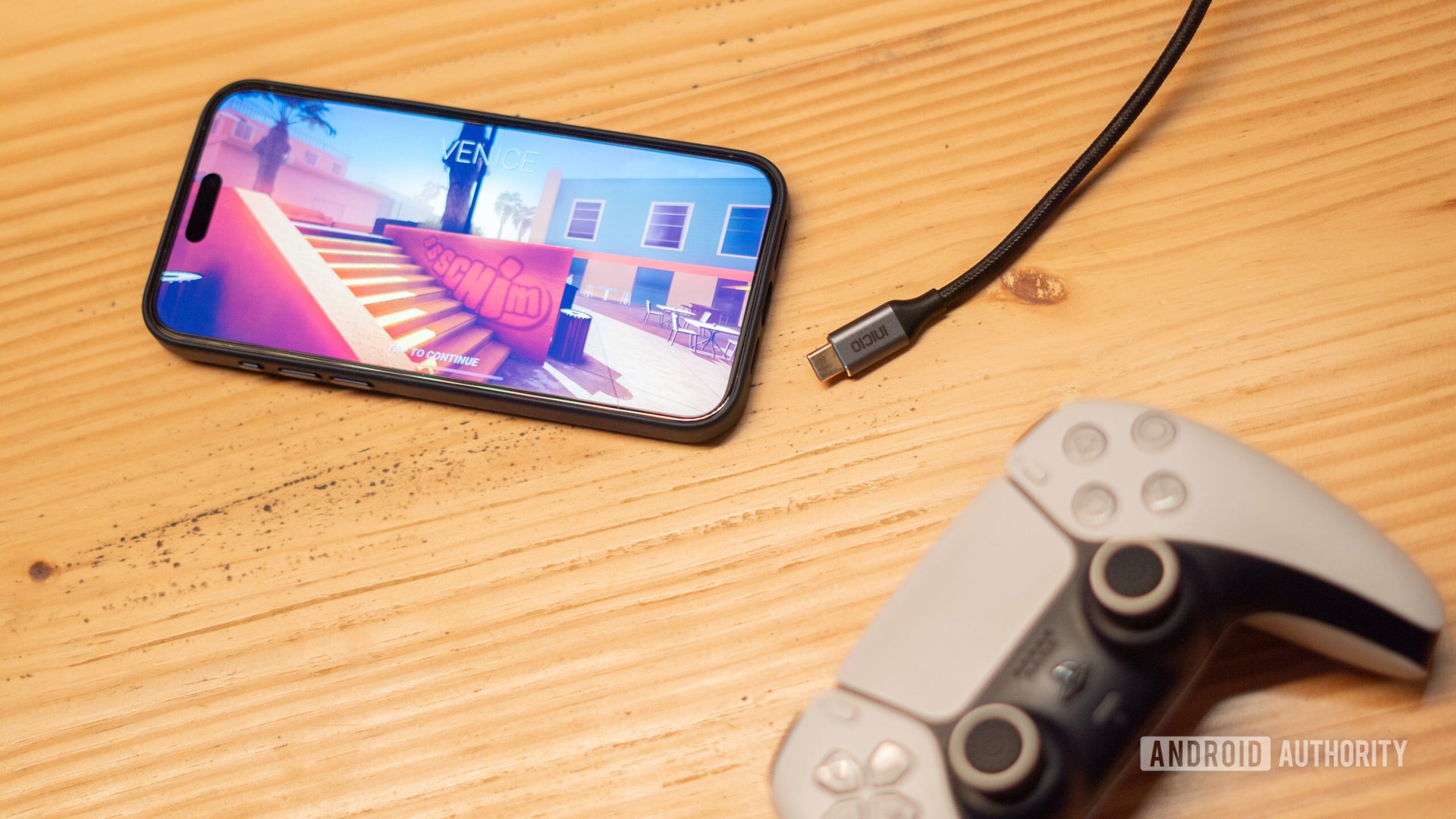Affiliate links on Android Authority may earn us a commission. Learn more.
iPhone touch screen not working? Here's how you can try to fix it
Weirdly, one potential cause is wired accessories.
We’re going to be blunt, here — in some cases, when an iPhone doesn’t respond to touch input, it’s entirely possible that hardware damage is to blame. But unless that damage is visible, there’s no need to jump to that conclusion, and there may be things you can do to fix your iPhone’s touch screen without picking up a tool or visiting a repair shop or Apple Store. We’ll explain your options below.
How to fix an iPhone’s touch screen (without tools)

Dhruv Bhutani / Android Authority
There are several possible ways of fixing touch input, depending on the cause. We’ll tackle both ends of the equation as we move through this troubleshooting list. If you’re not sure what’s at fault, try these steps in order.
- Check if a screen protector is to blame. If problems arose immediately after applying a screen protector, or attaching a case with a protector built-in, that’s an obvious culprit. Bear in mind that protectors are designed to allow input, so it’s more likely a protector is defective or installed improperly if it’s causing trouble. There could be too much adhesive, for instance, or you may not have cleaned the glass properly beforehand. Speaking of which…
- Make sure your screen is both clean and dry. Capactive screens like those on iPhones detect the electric signals in your fingers, so if there’s enough debris or any liquids in the way, it can reduce touch sensitivity or block it completely — as people who’ve tried to use a smartwatch in the shower can tell you. To clean your iPhone display, you can use tap water, but even better is a dedicated spray for monitors or glasses. Dry using a microfiber cloth, polishing until all streak marks are gone. Be on the lookout for debris or liquid trapped under the display while you’re at it, because that’s a more serious issue that will definitely require repairs.
- Disconnect any wired accessories you’re using. Oddly enough, some USB-C or Lightning accessories can interfere with a iPhone’s touch technology, even though the two systems are supposed to be separate. Apple itself acknowledges this, so unplug any headphones, battery packs, or other wired devices you might have connected, then try touch control again. If the problem only arises when a specific accessory is attached, you’ll likely have to ditch it or find a replacement. If it happens with every wired accessory, there’s either a deep-seated iOS bug or a hardware problem.
- Force-restart your iPhone. It’s possible there could be a temporary glitch that can be solved with a reboot, but that’s a little tricky when your touch screen isn’t responding. Thankfully, Apple thought of that, so it’s possible to force a restart using physical buttons only. On most iPhones (from the iPhone 8 onwards), you can do this by tapping the volume-up button, then the volume-down button, and finally pressing and holding the side button until an Apple logo appears. If it doesn’t work at first, you may need to adjust your timing.
- Scan for iOS updates. If a software bug is to blame, you’ll need to update your iPhone, but you probably can’t use the conventional method if touch input is unreliable. Mac owners can turn to the Finder app — plug in your iPhone, select your iPhone in the sidebar, then click on the General tab. Click on Check for Update and you should be able to install, though you may be asked for your passcode. Windows users need to open iTunes, plug in their iPhone, and click its small device icon when it appears towards the top of the app. From there they can select Summary in the sidebar, then click Check for Update. As on Macs, you may be prompted to enter your passcode.
- Contact Apple Support. At this stage, if nothing else has helped so far, it’s time to contact Apple Support. They should be able to help you book a service appointment, whether at an Apple Store or an authorized repair shop. Remember that a display replacement could be expensive if it’s not covered under AppleCare. If you’re technically savvy you might be able to take advantage of Apple’s Self Service Repair program, but that can be costly in its own right, and it’s not available in many countries, among them Canada and India.
You might like